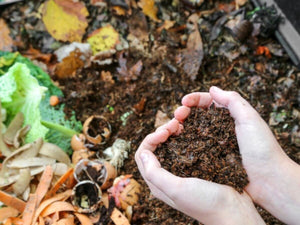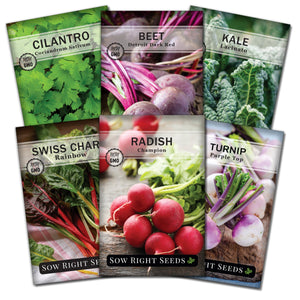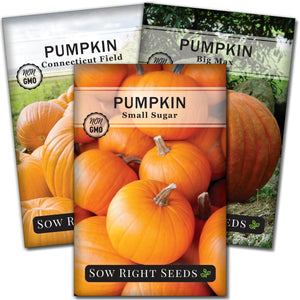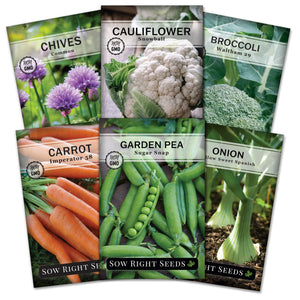Topics
When to Harvest Summer Vegetables for the Best Flavor: Tips & Tricks
Seasonal gardeningHome-grown vegetables taste so much better than store-bought for a lot of reasons, and one important reason is that you can harvest them when they are perfectly ripe. Commercially grown produce is picked at the perfect time for shelf stability, so taste and texture are secondary concerns. That's why homegrown is always better.

Luckily, when you grow your own produce, you’ve got a lot more control over when and how your veggies are harvested. So how do you know when to pick for the best flavor?
When Should I Harvest My Vegetables?
Each vegetable variety has its own perfect time to harvest and may depend a bit on your own personal preferences. Vegetables that are left to ripen on the plant in the sun often taste sweeter.
- Corn, peppers, and melons taste a lot better when they’ve fully ripened in the sun.
- Pick hot peppers when they reach a color that indicates your heat tolerance.
- Tomatoes and winter squash will continue to ripen after they’ve been picked, so you can pick them a little earlier.
- Smaller crops tend to be more tender, so picking squash, cucumbers, and beans earlier will give a better result.
- Delaying harvest too long can result in plants with a tough or woody texture. Okra, zucchini, and radish are great examples of this phenomenon.
With a little trial and error, you’ll soon find the sweet spot, where your vegetables are perfectly sweet, tender, and ripe without becoming tough. Once you are ready to harvest, pick your vegetables often. Fruits and vegetables are a plant’s way of reproducing by making seeds. That’s why frequent harvesting encourages more bountiful yields.
How to Harvest Summer Crops
Early morning is the ideal time to pick your vegetables. It’s cooler, and you’ll enjoy the experience much more. Plus, many plants are sweeter when harvested early. Don’t forget to bring harvesting tools like scissors and something to carry your harvest in, like a bag or basket.

When you’re harvesting root vegetables, water the soil first and loosen the soil gently. Snip any vegetables carefully so that you don’t disturb the rest of the plant. Take care to trim anything that’s overripe, too. A consistent, thorough harvest encourages your plant to continue fruiting. Clearing out rotting or overripe vegetation also deprives garden visitors of a free meal and prevents disease.
Storage of Garden Vegetables
If you’ve got too much food to eat, count yourself lucky! You only have a small window to enjoy your summer bounty, so eat as much as you can, share with anyone you like, and try to find ways to store the rest. There are so many possibilities! Freeze, preserve, can, dehydrate, pickle, and ferment to your heart’s content. Try out new recipes or rely on old favorites.
Cleanup and Seed Saving for Next Year
After your garden’s crops begin to taper off, clear the land of old plants and debris to discourage garden diseases and pests. Once you’re finished harvesting for the season, you may want to save seeds from a few of the plants that you enjoyed the most. Once you’ve decided you’re about finished, you can leave a few plants to fully develop their seeds. The overripe watermelon or zucchini of this summer holds the seeds for next year’s crops. Try to harvest from more than one plant for genetic diversity.
Harvest time: it’s when all your hard work comes to fruition in the veggie garden. Make the most of every moment of summer by picking your vegetables at the right time in the right way.
Resources:
University of Vermont - Department of Plant and Soil Science: Harvesting Summer Vegetables
University of Illinois Extension: Freezing your summer harvest
University of Missouri Extension: Vegetable Harvest and Storage
Written by Teresa Chandler










Leave a comment